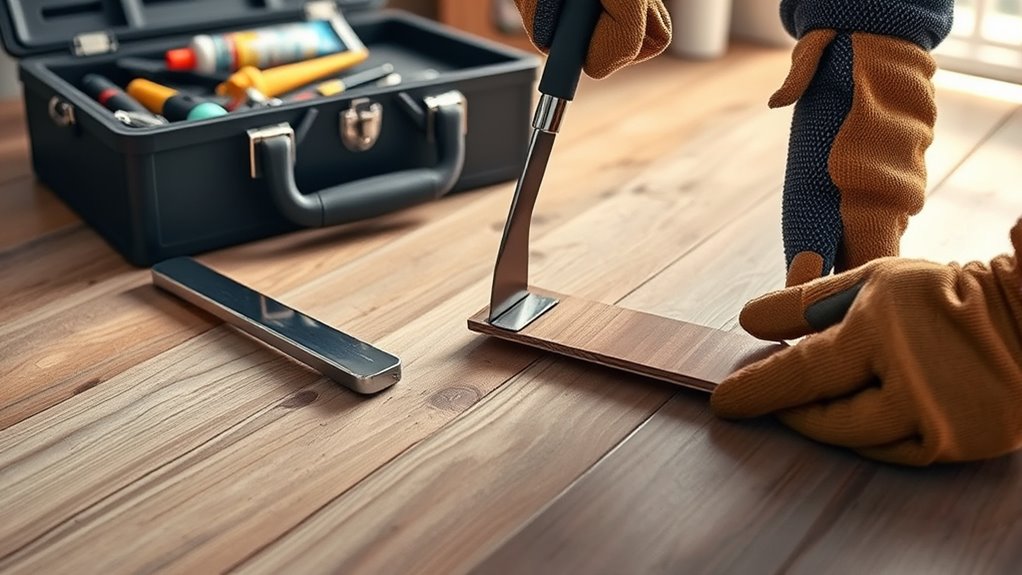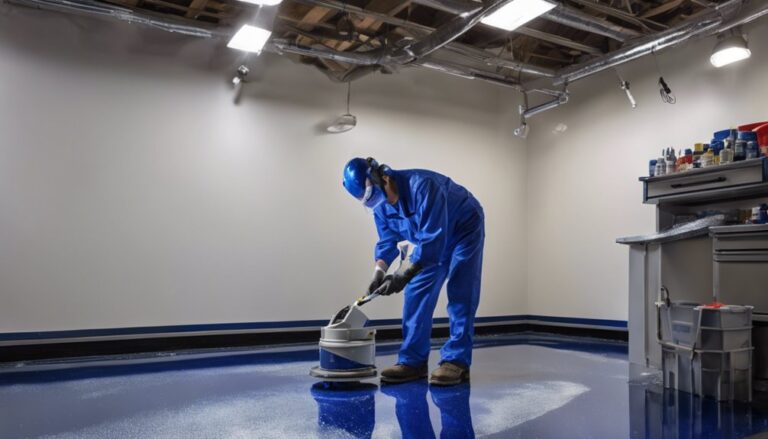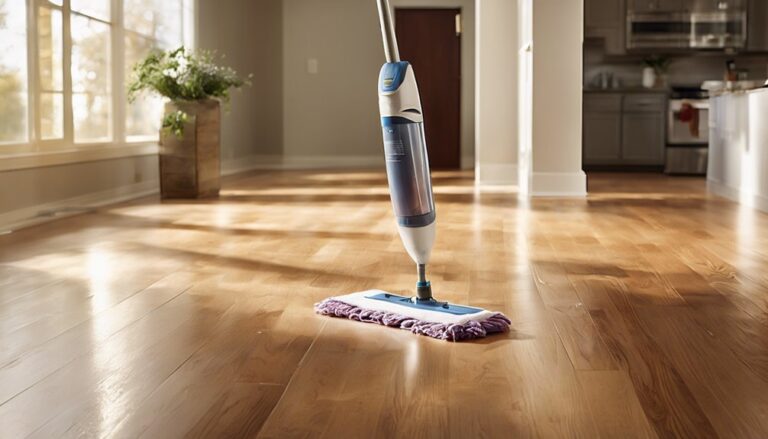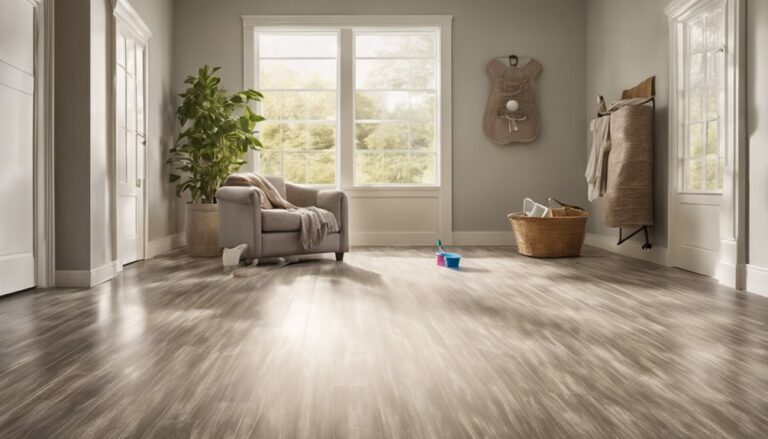To fix vinyl plank flooring, first identify the issue—lifting, gaps, scratches, or water damage. For loose planks, lift carefully, clean surfaces, apply vinyl adhesive, then press and weight planks until set. Repair scratches with a matching putty or wax, smoothing it flush. Address water damage by removing affected planks, drying the subfloor, and replacing moisture barriers if needed. Regular inspection and proper maintenance help prevent future problems. Explore further for detailed steps on each repair type and upkeep tips.
Identifying Common Vinyl Plank Flooring Problems

When dealing with vinyl plank flooring, the first step is to accurately identify the specific problem affecting your pavimento. Begin with buckle detection by inspecting the surface for raised or warped planks, often caused by moisture or improper acclimation. Run your hand along the floor to feel for unevenness or lifting. Next, examine the joints closely for seam separation, where gaps appear between planks due to expansion, contraction, or subfloor irregularities. Use a bright light at a low angle to highlight any gaps or misalignments. Document these issues precisely, as accurate identification empowers you to choose the correct repair method. By mastering buckle detection and seam separation identification, you maintain control over your flooring’s integrity, ensuring your space remains free and functional for your lifestyle.
Repairing Loose or Lifting Vinyl Planks
After pinpointing issues like buckling and seam separation, you’ll often find that loose or lifting vinyl planks are the next challenge to address. Start by carefully lifting the affected planks, maintaining plank alignment to avoid damaging surrounding pieces. Clean both the subfloor and plank undersides thoroughly to remove debris or old adhesive. Apply a high-quality vinyl flooring adhesive evenly on the subfloor, guaranteeing full coverage without excess. Press the plank firmly back into place, verifying precise plank alignment to maintain a seamless surface. Use weights or a roller to secure the plank during curing, preventing future lifting. Allow the adhesive to set per manufacturer instructions before resuming regular use. This method restores stability and guarantees your vinyl flooring stays flat and secure, giving you the freedom to enjoy a flawless floor.
Fixing Scratches and Surface Damage
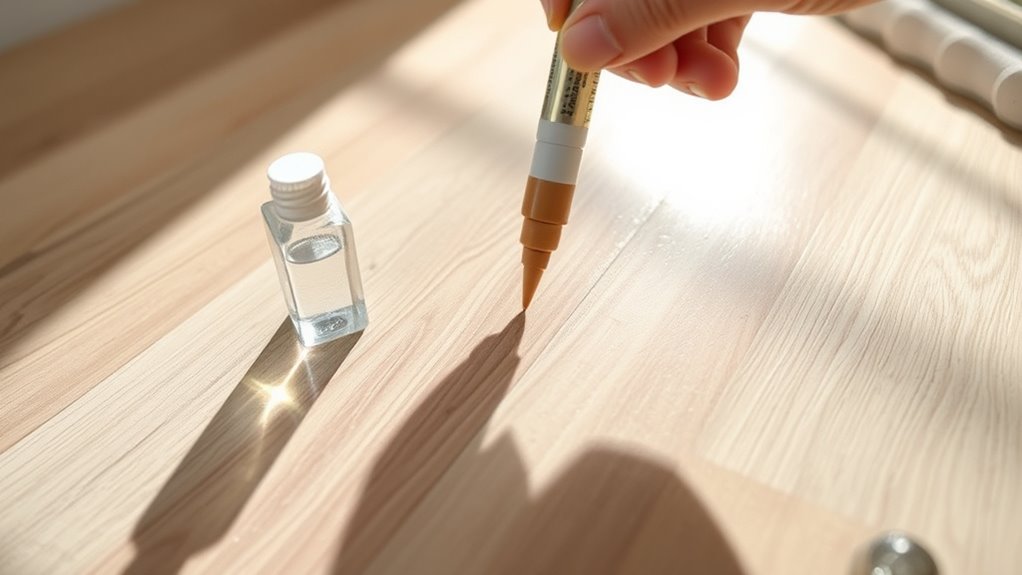
Although vinyl plank flooring is durable, scratches and surface damage can still occur from daily wear or accidental impacts. For effective scratch removal, start by cleaning the affected area with a mild detergent and water, ensuring no dirt interferes with repair. Use a vinyl floor repair kit, which typically includes a putty or wax stick matching your floor color. Apply the material directly into the scratch, then smooth it out with a plastic scraper. Allow it to dry as per instructions. For minor surface restoration, buff the area gently with a soft cloth to blend the repair seamlessly. Avoid harsh abrasives or excessive moisture to prevent further damage. Following these steps grants you control over scratch removal and surface restoration, maintaining your floor’s aesthetic without professional help.
Addressing Water Damage on Vinyl Flooring
Surface scratches and minor damage can often be repaired quickly, but water damage requires a different approach due to its potential to compromise the integrity of vinyl plank flooring. When you detect water exposure, immediately remove the affected planks to inspect for swelling, warping, or mold growth. Dry the subfloor thoroughly before proceeding. If moisture barriers beneath the flooring have failed or are absent, replace them to prevent future damage. Replace damaged planks with new ones, ensuring tight seams to avoid moisture infiltration. Use a moisture meter to verify subfloor dryness before installation. Addressing water damage promptly preserves your flooring’s structure and appearance, allowing you to maintain control over your space without costly replacements or disruptions.
Preventative Maintenance to Extend Flooring Life
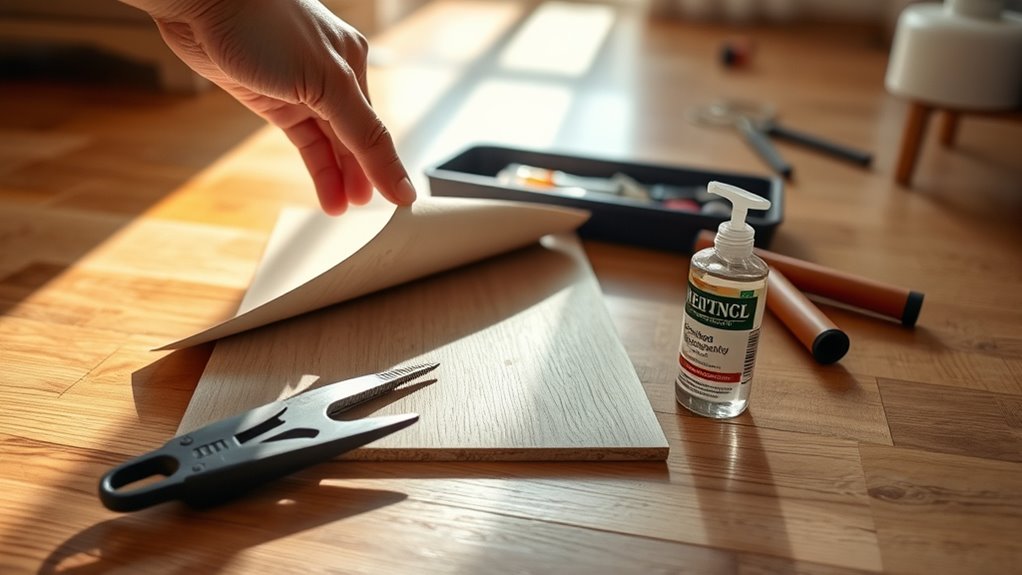
To maximize the lifespan of your vinyl plank flooring, you’ll need to implement regular preventative maintenance practices. These actions focus on preserving the surface integrity and preventing damage that curtails freedom in use.
- Utilize appropriate cleaning techniques: employ pH-neutral cleaners and microfiber mops to avoid surface wear or residue buildup.
- Conduct seasonal inspections: check for signs of moisture intrusion, seam separation, or surface scratches quarterly to catch issues early.
- Protect high-traffic areas: use floor mats and furniture pads to minimize abrasive damage and indentation.
- Control environmental factors: maintain indoor humidity between 30-50% to prevent plank expansion or contraction.

